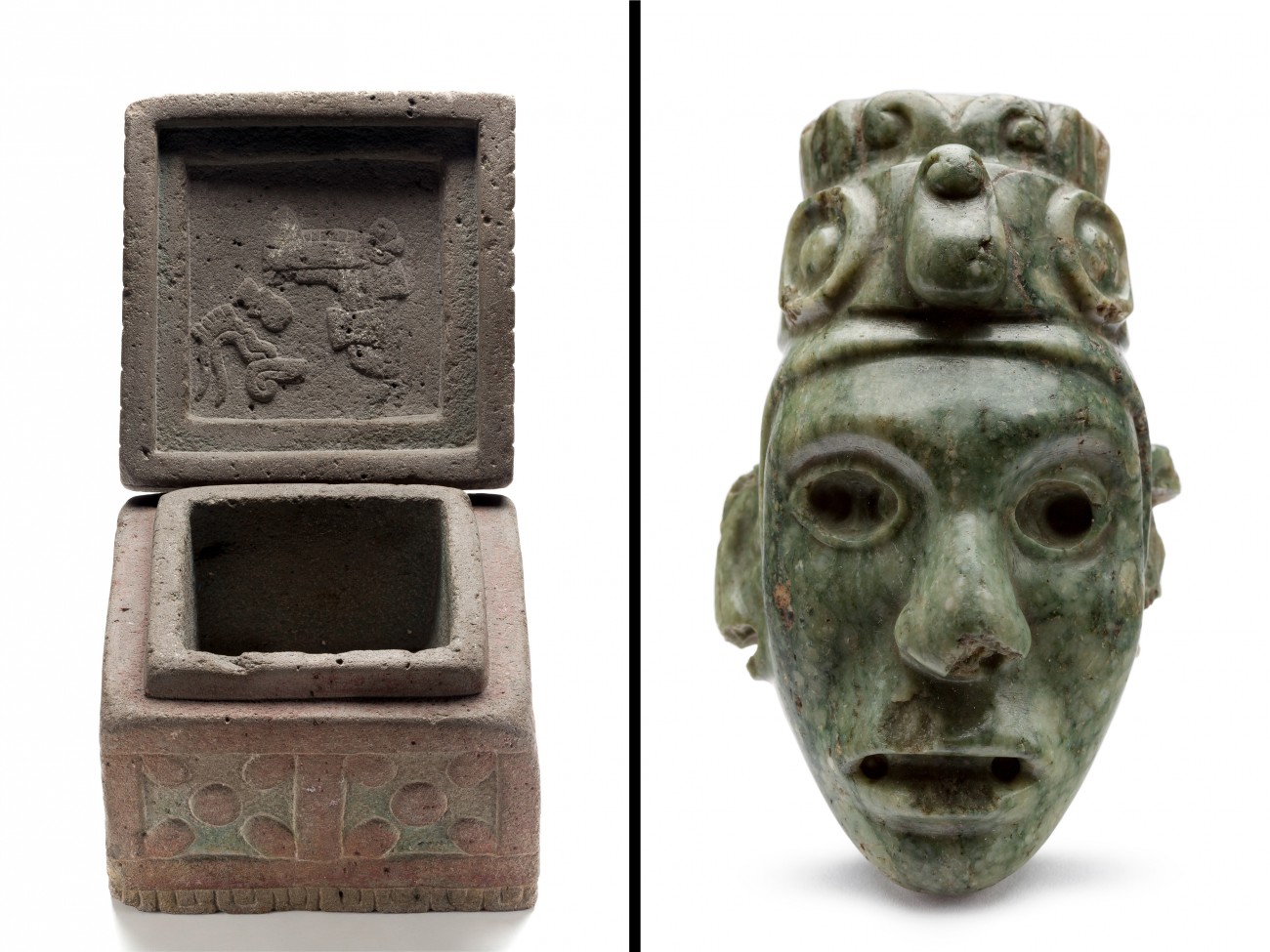
Moctezuma's Box and Jewels
Moctezuma II's Box, 1250–1521
Jade Pectoral, 1250–1521
Head of Xiuhtecuhtli, 1250–1521
Photo credit: Archivo Digital de las Colecciones del Museo Nacional de Antropología. INAH-CANON.
Audio Guide
This carved stone box and its associated jewels demonstrate the vital role of a Mexica ruler (tlatoani) as an axis mundi. An axis mundi, or “world axis,” is the center of cosmic space-time, connecting the celestial, earthly, and primordial realms and ensuring the cyclic movement of time. Carved on the inner lid of the stone box is a xiuhuitzolli or copilli (crown), symbolizing the tlatoani and the divine power he receives from Xiuhtecuhtli, a youthful deity who governs the passage of time. The two carved greenstone jewels further underscore this relationship between divine rulership and cosmic space-time: the pendant depicts Xiuhtecuhtli, who dons the same royal crown, and the pectoral’s etchings mark the eight partitions of the cosmos (four cardinal and four intercardinal directions) and its sacred center. The five-dot motif, carved eight times on the faces of the stone box, represents this same cosmic order: four corners and the center.

